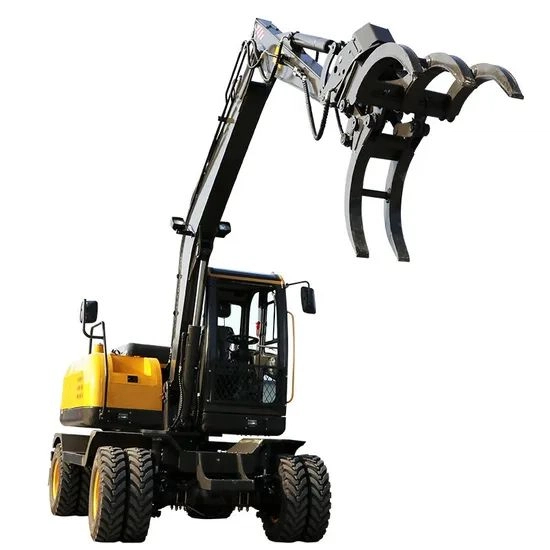Although crawler excavators and wheeled excavators differ significantly in their travel methods, as two mainstream types of excavators, they share many similarities in core functions, basic structure, and working principles, as detailed below:

I. Consistent Core Functions and Applications
Both are primarily used to complete engineering operations such as earth excavation, loading, handling, crushing, and site leveling through mechanical arms (boom, arm) and front-end working devices (e.g., buckets, breakers, grapples). They are widely applied in construction, mining, road construction, agricultural transformation, municipal engineering, and other scenarios.
II. Identical Basic Structural Framework
Both consist of the following core components, with consistent functional logic for each part:
- Working Device: Includes the boom, arm, bucket (or other attachments). It realizes telescoping, rotating, and excavating actions through hydraulic drive.
- Upper Body (Turret): Equipped with key components such as the engine, hydraulic system, control system, and cab. It can rotate 360° around the lower traveling mechanism (some small wheeled excavators may be non-full-slewing, but mainstream models are still full-slewing).
- Power System: Most use diesel engines as the power source (some small wheeled excavators have electric versions) to provide power output for the entire machine.
- Hydraulic System: Transmits power through components such as hydraulic pumps, cylinders, and valves to control the actions of the working device and traveling mechanism, which is the core for both to achieve flexible operation.
- Control System: Includes joysticks, pedals, and instrument panels in the cab, used to control the actions of the working device, traveling direction, and speed.
III. Same Working Principle
Both operate based on the principle of "hydraulic transmission + mechanical linkage":
- The engine drives the hydraulic pump to generate high-pressure hydraulic oil;
- The hydraulic oil is distributed to various hydraulic cylinders (e.g., boom cylinder, arm cylinder, bucket cylinder) and hydraulic motors (driving travel and turret rotation) through pipelines and control valves;
- The telescoping of hydraulic cylinders or the rotation of hydraulic motors drives the mechanical structure to move, realizing actions such as excavation, rotation, and traveling.
IV. Similar Operation Methods
The operating logic in the cab is basically the same. Operators control the composite actions of the boom, arm, and bucket through left and right joysticks, control the traveling direction and speed through pedals or separate joysticks, and control the turret rotation through unified operating components. There is no essential difference in the difficulty of getting started or operating habits.
V. Consistent Core Maintenance Requirements
Both have the same focus in daily maintenance, including:
- Regular inspection and replacement of engine oil and filters;
- Maintenance of the hydraulic system (replacement of hydraulic oil and filters, inspection of pipeline tightness);
- Lubrication of key hinge points (e.g., pins, bearings);
- Inspection of the working conditions of the braking system and electrical system (lights, sensors, etc.).
In summary, the differences between crawler excavators and wheeled excavators mainly lie in the traveling mechanism and the applicable scenarios derived from it. However, their core functions, structures, principles, and operating logic are highly unified. Essentially, they are variants of the same type of construction machinery with different traveling methods.





